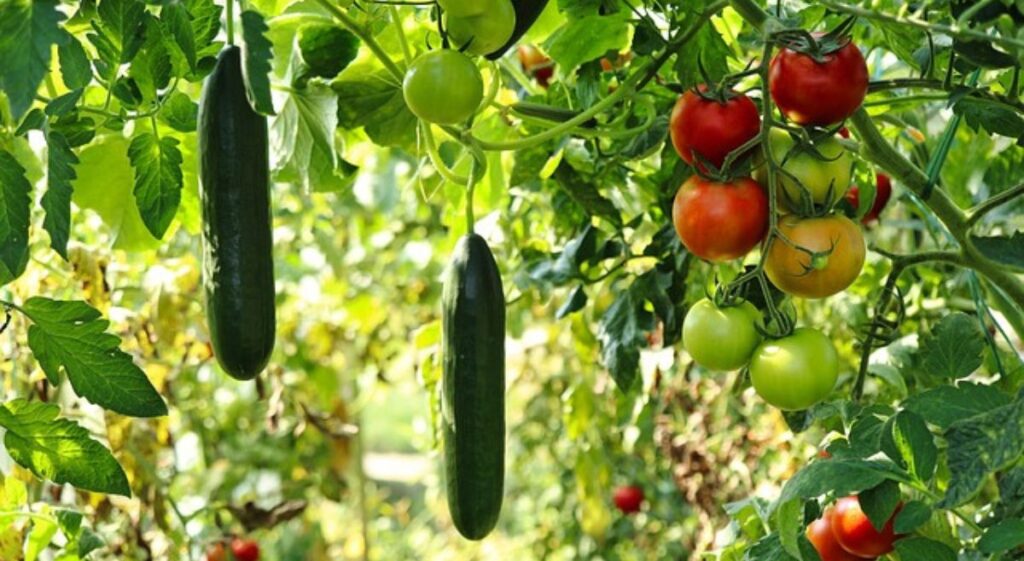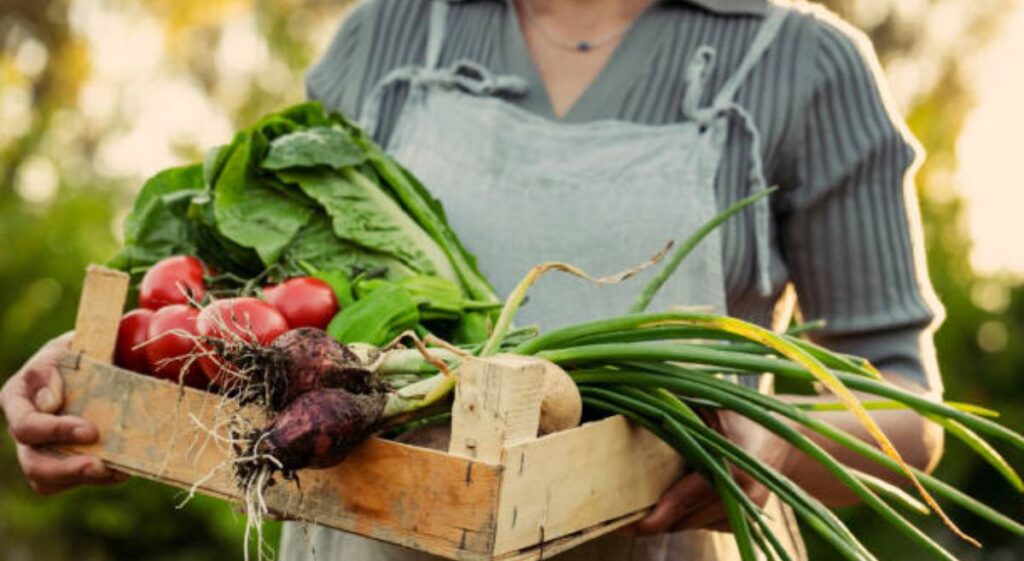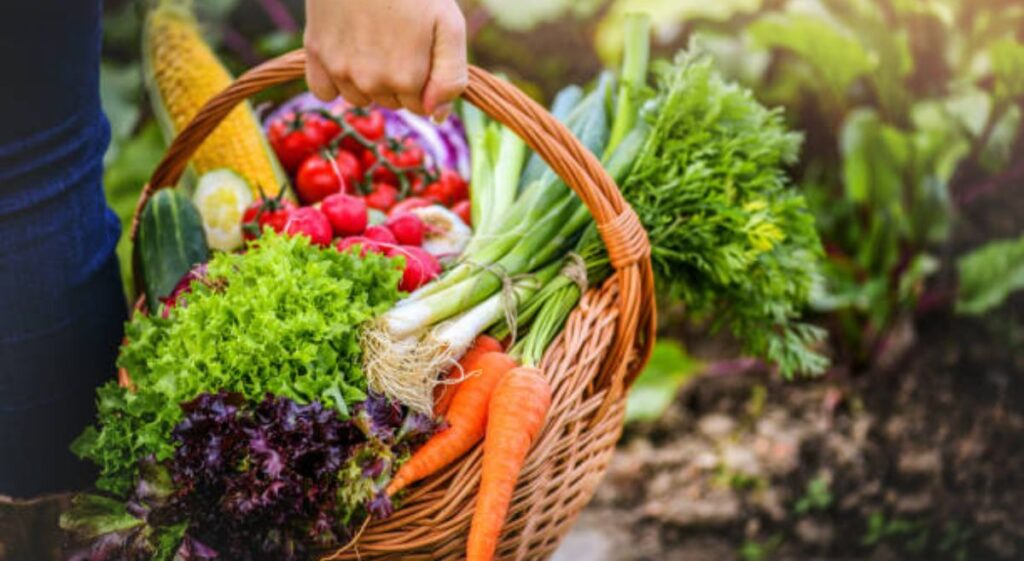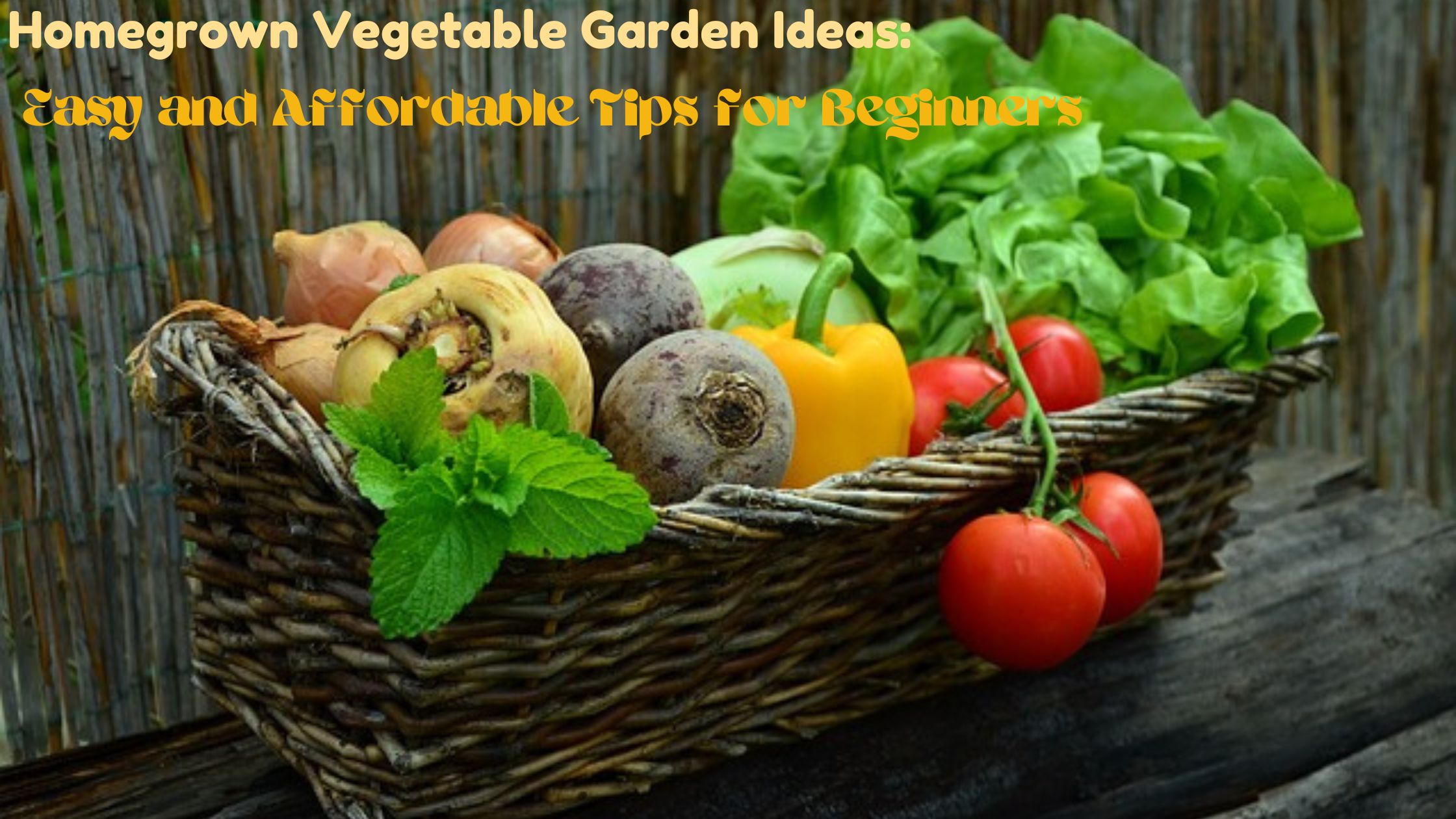Introduction:-
Homegrown Vegetable Garden Ideas: Easy and Affordable Tips for Beginners

Embarking on a homegrown vegetable garden adventure can be incredibly fulfilling. It not only allows you to relish fresh, homegrown produce but also offers a beautiful opportunity to connect with nature. Regardless of the size of your outdoor space, be it a spacious backyard or a cozy balcony, cultivating a thriving vegetable garden is possible without breaking the bank. This comprehensive guide provides beginner-friendly, affordable tips to help you kickstart your gardening journey with ease.
Homegrown Vegetable Garden Ideas
Starting a vegetable garden at home as a beginner is a rewarding experience that entails several crucial steps. This simplified guide will assist you in getting started:
1. Choosing the Right Location:
- Sunlight: Select an area that receives at least 6-8 hours of daily sunlight, as most vegetables require ample sunlight to thrive.
- Water Access: Ensure your garden is near a water source for consistent watering, especially during dry periods.
- Soil Quality: Choose a spot with well-draining soil rich in organic matter to provide essential nutrients and moisture retention.
2. Planning Your Garden Layout:
- Size: Start small, especially if you’re new to gardening. A manageable area like a 10×10 foot space can yield a variety of vegetables.
- Layout: Decide on the garden’s structure: rows, raised beds, or containers. Raised beds and containers offer better control over soil conditions and weed management.
3. Selecting Easy-to-Grow Vegetables:
- Beginners’ Favorites: Start with vegetables that are forgiving and easy to grow, such as lettuce, radishes, green beans, tomatoes, or zucchini.
- Climate Consideration: Choose vegetables that are suitable for your local climate and growing season.
4. Preparing the Soil:
- Clearing the Area: Remove weeds, rocks, and debris from your designated garden area.
- Soil Amendment: Mix in compost or organic matter to enhance soil texture, drainage, and fertility.
- Soil Testing: Consider conducting a soil test to determine the pH and nutrient levels, aiming for slightly acidic to neutral soil (pH 6.0-7.0).
5. Planting:
- Timing: Plant according to your region’s growing season. Cool-season crops like spinach and lettuce can be planted in early spring, while warm-season crops like tomatoes and cucumbers should be planted after the last frost.
- Depth and Spacing: Follow the instructions on seed packets or plant labels for correct planting depth and spacing to ensure proper air circulation and reduce the risk of disease.
6. Watering Regularly:
- Consistency: Maintain consistent soil moisture, especially during germination. Water in the morning to minimize evaporation and reduce fungal growth.
- Mulching: Apply a layer of mulch around your plants to retain moisture, suppress weeds, and regulate soil temperature.
7. Fertilizing as Needed:
- Fertilizer Choice: Use a balanced, organic fertilizer or compost to avoid over-fertilization.
- Timing: Fertilize at key growth stages, such as flowering or fruiting, to promote healthy growth.
8. Managing Weeds, Pests, and Diseases:
- Weeding: Regularly remove weeds to prevent competition for nutrients and water.
- Pest Control: Monitor your plants for signs of pests and use natural remedies like neem oil or insecticidal soap to control them.
- Disease Prevention: Encourage good air circulation and avoid overhead watering to minimize the risk of fungal diseases.
9. Harvesting:
- Timing: Harvest vegetables at their peak ripeness to ensure the best flavor and encourage continued production.
- Tools: Use sharp scissors or pruners to harvest without damaging the plants.
10. Enjoy and Learn:
- Observation: Keep a record of what works and what doesn’t in your garden. Note which vegetables thrive and which ones struggle.
- Expansion: As you gain experience, consider expanding your garden or trying new varieties and gardening techniques.
Vegetable gardening is a journey of continuous learning and experimentation. Embrace the process, and you’ll be rewarded with fresh, homegrown produce and a sense of accomplishment.
What are the easiest vegetables to grow for beginners?
Beginner-Friendly Vegetables for a Rewarding Gardening Experience:

- Lettuce: With its rapid growth and multiple harvests, lettuce is perfect for small spaces and container gardening.
- Radishes: An ideal crop for teaching children about gardening, radishes mature quickly and require minimal care.
- Carrots: Easy to grow in loose, sandy soil, carrots thrive in garden beds and deep containers.
- Green Beans: Bush varieties of green beans are easy to grow and require little support, providing a good yield with regular harvesting.
- Tomatoes: While requiring more attention, tomatoes offer a rewarding experience for beginners. Cherry tomatoes are particularly easy to grow in containers.
- Zucchini: A prolific producer, zucchini requires minimal effort for a large harvest and is an excellent choice for beginners with space.
- Peas: Easy to grow and can be planted early in the season. Peas are also suitable for vertical gardening.
- Spinach: Quick-growing spinach can be harvested multiple times in a season and is well-suited for cooler climates.
- Cucumbers: Bush varieties of cucumbers are easy to grow in containers or garden beds, requiring regular watering but minimal maintenance.
- Beets: Simple to grow, beets have edible roots and greens, and they thrive in various soils and climates.
These vegetables offer an enjoyable and rewarding experience for beginners, allowing them to see quick results and relish fresh produce from their own gardens.
How do I maintain a vegetable garden with minimal effort?
To maintain a vegetable garden with minimal effort, adopt smart gardening practices that minimize the need for constant attention. Here are some tips to help:

1. Plant Selection:
- Choose vegetables like radishes, zucchini, lettuce, and bush beans that are hardy, low-maintenance, and resistant to pests and diseases.
- Consider perennial vegetables like asparagus and rhubarb that require little annual care.
2. Raised Beds and Containers:
- Use raised beds or containers for improved control over soil quality, drainage, and weed management.
- Use high-quality potting soil or a blend of compost and soil to reduce frequent fertilizing.
3. Mulching:
- Generously mulch your garden with organic materials like straw, wood chips, or grass clippings to suppress weeds, retain moisture, and enrich the soil.
4. Drip Irrigation:
- Install a drip irrigation system for efficient watering directly at the roots, reducing water waste and time spent watering.
- Add a timer to automate watering.
5. Companion Planting:
- Practice companion planting to naturally control pests and enhance plant growth.
- Grow pest-repelling plants like marigolds alongside vegetables.
6. Self-Seeding and Fast-Growing Crops:
- Opt for self-seeding plants like arugula and dill to eliminate the need for replanting each year.
- Grow fast-growing crops like radishes and lettuce for quick harvests, reducing pest and disease vulnerability.
7. Natural Pest and Disease Management:
- Start with healthy, nutrient-rich soil to enhance plant resistance to pests and diseases.
- Use row covers or netting as pest barriers to avoid chemical pesticides.
- Implement Integrated Pest Management (IPM) practices, monitoring pest levels and using natural solutions when necessary.
8. Proper Plant Spacing:
- Space plants adequately to reduce competition for water and nutrients, resulting in healthier plants with minimal intervention.
- Good spacing improves air circulation, preventing fungal diseases.
9. Regular Harvesting:
- Harvest crops regularly to encourage continuous growth, reduce the need for replanting, and prevent pest attraction.
10. Handy Tools and Supplies:
- Keep gardening tools and supplies close at hand to save time during maintenance tasks.
- Invest in a few good-quality tools for efficient and faster gardening.
11. Off-Season Planning:
- Plant cover crops during the off-season to enrich the soil and suppress weeds.
- Minimize cleanup by leaving some plant debris to decompose naturally, adding organic matter to the soil.
By implementing these tips, you can maintain a productive and healthy vegetable garden with significantly reduced time and effort.
Conclusion
Embark on the rewarding journey of starting a vegetable garden at home – a project accessible to all, irrespective of prior experience or financial constraints. By implementing these simple and cost-effective tips, you’ll pave the way for a flourishing garden that will yield an abundance of fresh, homegrown produce for your family to savor. Let the joy of gardening blossom within you!
References
Comprehensive Resources for Homegrown Vegetable Gardens: Easy and Affordable Tips for Beginners
- National Gardening Association (garden.org):
- Beginner-friendly guides for starting vegetable gardens.
- Tips on planning, planting, and maintenance.
- The Old Farmer’s Almanac (almanac.com):
- Comprehensive resources on vegetable gardening.
- Seed starting to harvesting techniques.
- Tailored advice for various climates.
- University of California Agriculture and Natural Resources (ucanr.edu):
- Research-based tips on creating and maintaining a vegetable garden.
- Emphasis on sustainable practices.
- Mother Earth News (motherearthnews.com):
- Practical advice on organic gardening.
- Topics include soil preparation, composting, and pest control.
- Gardener’s Supply Company (gardeners.com):
- Detailed information on different gardening techniques.
- Ideal for beginners, including container gardening and raised beds.
- Royal Horticultural Society (RHS) (rhs.org.uk):
- Step-by-step advice on starting a vegetable garden.
- Specific tips for different types of vegetables.
These reliable sources provide a foundation for anyone interested in creating their own homegrown vegetable garden.
